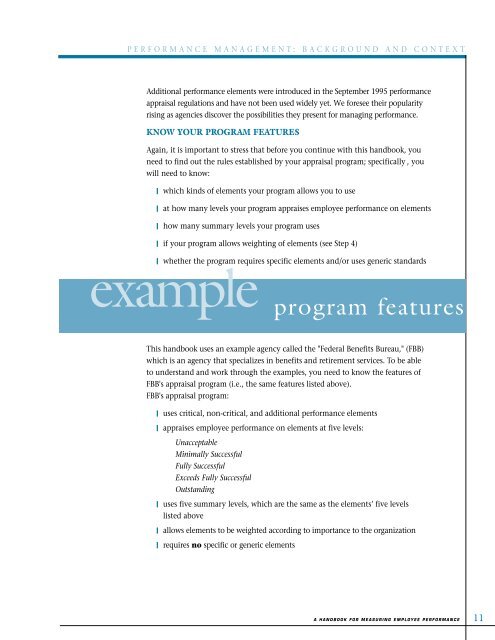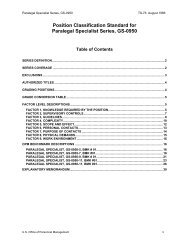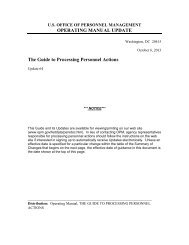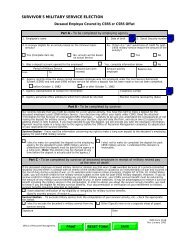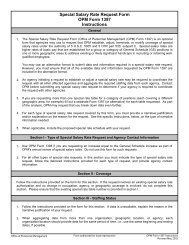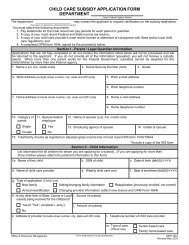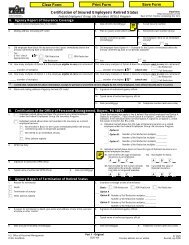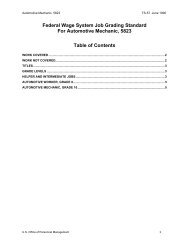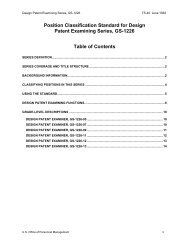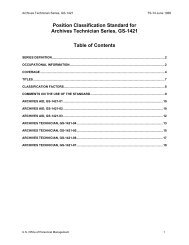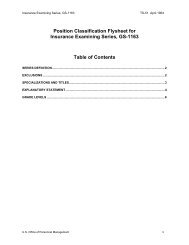A Handbook for Measuring Employee Performance - Office of ...
A Handbook for Measuring Employee Performance - Office of ...
A Handbook for Measuring Employee Performance - Office of ...
You also want an ePaper? Increase the reach of your titles
YUMPU automatically turns print PDFs into web optimized ePapers that Google loves.
PERFORMANCE MANAGEMENT: BACKGROUND AND CONTEXT<br />
Additional per<strong>for</strong>mance elements were introduced in the September 1995 per<strong>for</strong>mance<br />
appraisal regulations and have not been used widely yet. We <strong>for</strong>esee their popularity<br />
rising as agencies discover the possibilities they present <strong>for</strong> managing per<strong>for</strong>mance.<br />
KNOW YOUR PROGRAM FEATURES<br />
Again, it is important to stress that be<strong>for</strong>e you continue with this handbook, you<br />
need to find out the rules established by your appraisal program; specifically , you<br />
will need to know:<br />
❙ which kinds <strong>of</strong> elements your program allows you to use<br />
❙ at how many levels your program appraises employee per<strong>for</strong>mance on elements<br />
❙ how many summary levels your program uses<br />
❙ if your program allows weighting <strong>of</strong> elements (see Step 4)<br />
❙ whether the program requires specific elements and/or uses generic standards<br />
example program features<br />
This handbook uses an example agency called the "Federal Benefits Bureau," (FBB)<br />
which is an agency that specializes in benefits and retirement services. To be able<br />
to understand and work through the examples, you need to know the features <strong>of</strong><br />
FBB's appraisal program (i.e., the same features listed above).<br />
FBB's appraisal program:<br />
❙ uses critical, non-critical, and additional per<strong>for</strong>mance elements<br />
❙ appraises employee per<strong>for</strong>mance on elements at five levels:<br />
Unacceptable<br />
Minimally Successful<br />
Fully Successful<br />
Exceeds Fully Successful<br />
Outstanding<br />
❙ uses five summary levels, which are the same as the elements’ five levels<br />
listed above<br />
❙ allows elements to be weighted according to importance to the organization<br />
❙ requires no specific or generic elements<br />
A HANDBOOK FOR MEASURING EMPLOYEE PERFORMANCE 11


